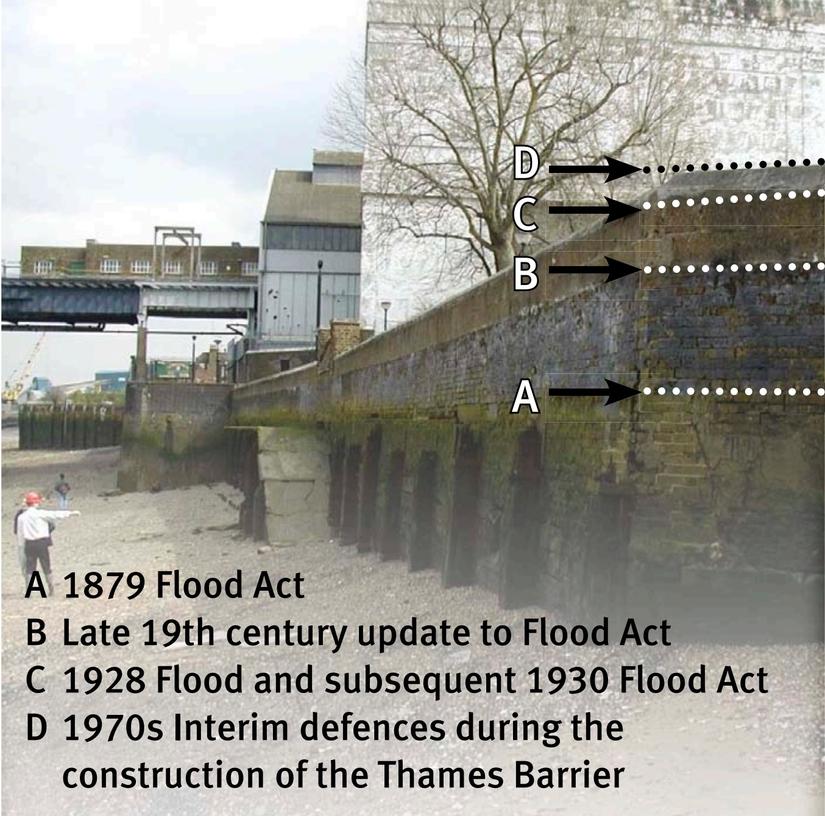Thames River Walls: London's overlooked flood defences
This summer and autumn, there have been a series of flash floods in London, causing damage to homes and businesses and the flooding of several stations, schools and hospitals. London isn’t alone, there has been devastating flooding in countries around the world in recent months, leading to more conversations about how we adapt our cities and homes to changing weather patterns and increasing sea levels caused by climate change.
The Thames river walls are an often-overlooked part of London’s flood defences. In many areas of London, the ground level is below the height of high tides and would flood regularly without the protection of the river walls. There was an exceptional high tide at Greenwich in May 2020, during which the Environment Agency monitored the tide and weather conditions very carefully, but kept the Thames barrier open.
At Thames Discovery Programme, we record and study the river walls to gain a better understanding of how Londoners have developed the riverside over time, to reclaim land, access the river and it’s foreshore and for trade, industry and settlement along it’s banks. They also provide important evidence of how people have had to protect the city from flooding and changing sea level rises over the centuries.

This diagram of the riverwall at Greenwich by the Environment Agency shows the how the wall has had to be raised over time after flooding. Image from the Thames Estuary 2100 Plan © Environment Agency
As well as the walls themselves, our volunteers have been working with City of London Archaeology Society (CoLAS) on the CRaFT project to research and record river access points from Vauxhall to Greenwich. The changes to river stairs, causeways, and slipways also add to our understanding of how people have adapted to the changing river through time.
The Thames Estuary 2100 plan sets out how the Environment Agency and their partners manage tidal flood risk in the Thames Estuary. The plan identified the need to raise flood defences across London and the estuary. In some parts of London, this will mean raising the river wall by up to 1 metre by 2100. It’s looking increasingly likely that this will need to happen sooner than that, as sea level rise is accelerating faster than anticipated. This work is already starting to happen, The City of London recently consulted on their Draft Riverside Strategy, with plans to raise the river walls in the City of London.
London will have to adapt to protect lives and property from rising sea levels and more flood events caused by climate change, and there will be some tough decisions about what we can and cannot save. Our research helps us to understand how these adaptions will affect the surviving archaeology of the river. But it’s not the first time the city has faced these challenges, and we can also draw light on how London has responded in the past.
If you want to do a deep dive into the history of Embanking the Thames, there’s an extensive Wikipedia page, which draws on numerous historical and archaeological sources.